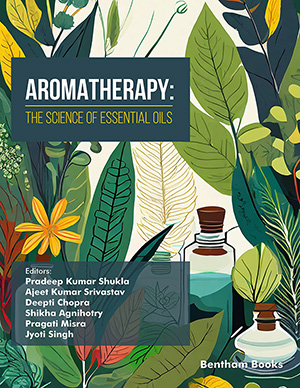
Abstract
Sleep apnea (SA) or Obstructive sleep apnoea (OSA) is a widely spread sleep disorder marked by repetitions of a complete or partial collapse of the upper airways during sleep. The pathogenesis of OSA is due to the recurrent obstruction of the pharyngeal airway during sleep. The risk factors contributing to upper airway obstruction are obesity, cardiovascular diseases, craniofacial changes, alcohol and smoking. The condition is associated with significant morbidity and mortality. The diagnosis is established with polysomnography (PSG). Lifestyle changes such as weight loss, keeping away from alcohol, tobacco, and sedatives and altering the usual sleeping body position help out in decreasing apnoea symptoms. Various treatments are available for the successful management of this disease, such as continuous positive airway pressure (CPAP) is mainly used in patients with severe SA and oral appliances are widely used in mild to moderate SA and for patients intolerant to CPAP therapy. There are many options available for surgical therapy, with the UPPP (Uvulopalato-pharyngoplasty) being the most widely employed. Also, a number of medications such as tricyclic antidepressants (TCA’s), decongestants, nasal steroids, antihypertensive agents, CNS stimulants and supplementary oxygen are used for treating patients with OSA.
Keywords: Sleep apnea syndrome, Sleep, Brain, Polysomnography, Positive airway pressure, Medication.
[http://dx.doi.org/10.1016/S0079-6123(03)45013-9] [PMID: 14650916]
[http://dx.doi.org/10.1016/j.sleep.2010.02.002] [PMID: 20359944]
[http://dx.doi.org/10.1023/A:1026398402985] [PMID: 9187490]
[http://dx.doi.org/10.1111/j.1365-2869.1997.00276.x] [PMID: 9493529]
[http://dx.doi.org/10.1016/0013-4694(49)90219-9] [PMID: 18421835]
[http://dx.doi.org/10.1152/physrev.1950.30.4.459] [PMID: 14786044]
[http://dx.doi.org/10.5664/jcsm.26527] [PMID: 17557503]
[http://dx.doi.org/10.1016/0306-4522(89)90007-9] [PMID: 2710333]
[http://dx.doi.org/10.1523/JNEUROSCI.2341-06.2006] [PMID: 17021184]
[http://dx.doi.org/10.1016/0304-3940(87)90028-0] [PMID: 3561856]
[http://dx.doi.org/10.1016/0028-3908(88)90159-1] [PMID: 2965315]
[http://dx.doi.org/10.1016/0031-9384(92)90157-W] [PMID: 1313592]
[http://dx.doi.org/10.1016/0006-8993(89)91623-5] [PMID: 2924157]
[http://dx.doi.org/10.1152/jn.1946.9.4.285] [PMID: 20991815]
[http://dx.doi.org/10.1016/0006-8993(73)90431-9] [PMID: 4124397]
[http://dx.doi.org/10.1016/S0306-4522(98)00635-6] [PMID: 10366002]
[http://dx.doi.org/10.1210/endo.137.7.8770929] [PMID: 8770929]
[http://dx.doi.org/10.1196/annals.1356.028] [PMID: 16399907]
[http://dx.doi.org/10.1146/annurev-pharmtox-010814-124742]
[http://dx.doi.org/10.1016/S0011-8532(22)00486-4] [PMID: 11699234]
[http://dx.doi.org/10.1146/annurev.me.27.020176.002341] [PMID: 180875]
[http://dx.doi.org/10.1016/S0022-3476(84)80348-0] [PMID: 6737123]
[http://dx.doi.org/10.1007/BF03009406] [PMID: 6751498]
[http://dx.doi.org/10.1016/S0030-6665(20)31239-1] [PMID: 2199895]
[PMID: 6703493]
[http://dx.doi.org/10.1164/ajrccm.162.2.9908123] [PMID: 10934114]
[http://dx.doi.org/10.1152/physrev.00043.2008]
[http://dx.doi.org/10.1378/chest.118.2.372] [PMID: 10936127]
[http://dx.doi.org/10.1016/j.smrv.2012.10.003] [PMID: 23528272]
[http://dx.doi.org/10.1016/j.rppnen.2014.07.005] [PMID: 25926367]
[http://dx.doi.org/10.2337/dc08-s272] [PMID: 18227501]
[http://dx.doi.org/10.1001/archinte.162.8.893] [PMID: 11966340]
[http://dx.doi.org/10.1161/01.CIR.0000136587.68725.8E] [PMID: 15249509]
[http://dx.doi.org/10.1016/j.ijcard.2004.12.068] [PMID: 16321661]
[http://dx.doi.org/10.1183/09031936.06.00107805] [PMID: 16641120]
[http://dx.doi.org/10.4103/cp.cp_13_19]
[http://dx.doi.org/10.1053/rmed.2003.1494] [PMID: 12814148]
[http://dx.doi.org/10.1016/j.sleep.2007.04.024] [PMID: 17658296]
[http://dx.doi.org/10.1001/archinte.1995.00430070088011] [PMID: 7695462]
[http://dx.doi.org/10.1001/archinte.1997.00440360178019] [PMID: 9250236]
[http://dx.doi.org/10.1056/NEJM199304293281704] [PMID: 8464434]
[http://dx.doi.org/10.1111/j.1532-5415.1983.tb05748.x] [PMID: 6853947]
[http://dx.doi.org/10.1055/s-2007-1012752]
[http://dx.doi.org/10.1164/ajrccm/138.2.337] [PMID: 3195832]
[http://dx.doi.org/10.1164/ajrccm.163.3.9911064] [PMID: 11254512]
[http://dx.doi.org/10.1164/ajrccm.162.3.9908002] [PMID: 10988088]
[PMID: 15289750]
[http://dx.doi.org/10.1016/j.jaip.2016.02.022] [PMID: 27372597]
[http://dx.doi.org/10.1007/s11325-012-0677-3] [PMID: 22374151]
[http://dx.doi.org/10.5664/jcsm.27497] [PMID: 19960649]
[http://dx.doi.org/10.1155/2013/670381] [PMID: 24223313]
[http://dx.doi.org/10.3109/00016489.2014.962183] [PMID: 25384381]
[http://dx.doi.org/10.1164/rccm.200306-752OC] [PMID: 14597482]
[http://dx.doi.org/10.1007/s11940-004-0030-7] [PMID: 15157408]
[http://dx.doi.org/10.1088/0967-3334/35/1/R1] [PMID: 24346125]
[http://dx.doi.org/10.1016/j.otohns.2003.07.004] [PMID: 14663425]
[http://dx.doi.org/10.1016/j.joms.2005.11.119] [PMID: 17174756]
[http://dx.doi.org/10.1001/archotol.126.4.494] [PMID: 10772303]
[PMID: 7807635]
[http://dx.doi.org/10.1111/j.1445-2197.2006.03700.x] [PMID: 16681537]
[http://dx.doi.org/10.1093/sleep/29.2.244] [PMID: 16494093]
[http://dx.doi.org/10.1016/0005-7967(88)90111-8] [PMID: 3365202]
[http://dx.doi.org/10.1152/japplphysiol.00203.2003] [PMID: 14555669]
[http://dx.doi.org/10.1016/S0034-5687(01)00254-7] [PMID: 11504591]
[http://dx.doi.org/10.1152/jappl.1996.81.2.643] [PMID: 8872629]
[http://dx.doi.org/10.2165/00003495-200464130-00001] [PMID: 15212557]
[http://dx.doi.org/10.1378/chest.100.2.416] [PMID: 1864117]
[http://dx.doi.org/10.1111/j.1365-2869.2008.00667.x] [PMID: 18710420]
[PMID: 24074330]
[http://dx.doi.org/10.1177/1470320310366581] [PMID: 20488824]
[http://dx.doi.org/10.1016/j.ddmod.2011.03.003] [PMID: 22125570]
[http://dx.doi.org/10.1378/chest.07-0311] [PMID: 17699130]
[http://dx.doi.org/10.1038/jhh.2009.96] [PMID: 20016520]
[http://dx.doi.org/10.5665/sleep.2390] [PMID: 23372276]
[http://dx.doi.org/10.1378/chest.101.5.1228] [PMID: 1582276]
[PMID: 2184489]
[PMID: 14642143]
[PMID: 7973321]
[http://dx.doi.org/10.1016/S0306-4522(00)00239-6] [PMID: 10974428]
[http://dx.doi.org/10.1093/sleep/16.3.199a] [PMID: 8506450]
[http://dx.doi.org/10.1007/s11818-017-0145-1]
[http://dx.doi.org/10.5664/JCSM.1328] [PMID: 22003351]
[http://dx.doi.org/10.7326/M12-3187] [PMID: 25089864]
[http://dx.doi.org/10.12688/f1000research.13010.1] [PMID: 29707207]





























